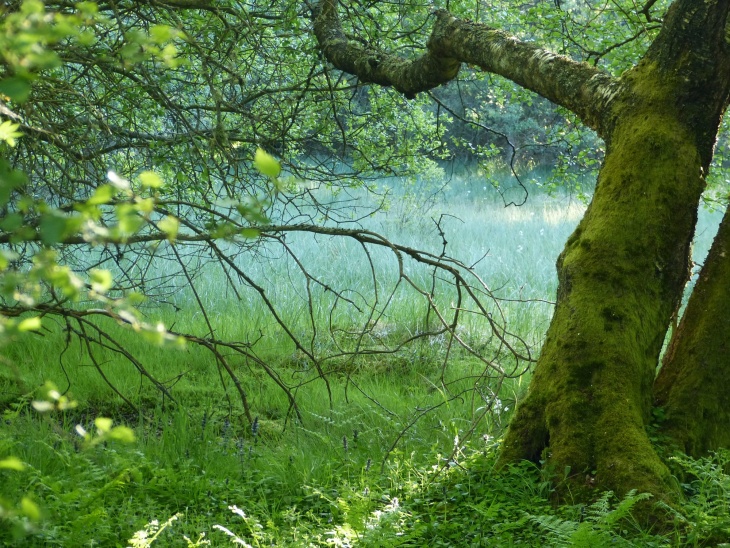Aberdeen is situated on the North East coast of Scotland, and is a unique location that combines both coastal and inland habitats for biodiversity to flourish in. The local area boasts some of the most beautiful scenery in Scotland, which is a haven for plants and animals alike.
Many precious ecosystems are under threat, both locally and across the country. We aim to help people understand and value their local area, and discover the wildlife that we are so lucky to have on our doorstep.



Photographs throughout the website are from University of Aberdeen Staff; Many thanks to Colin Denholm, Glenda Hale, Ian Clarke, Laura Gates and Louise Page for the images.
Get Involved
- Places to Visit
-
Aberdeen City and Aberdeenshire have some of the best areas to explore wild spaces, and spot some fabulous wildlife.
As well as the links below, the university has put together a beautiful guide available to download to help students and other discover the Nature on our Doorstep. - MISSING LINK
There are several excellent nature reserves in the local area, including Forvie Nature Reserve, St Cyrus Nature Reserve and several RSPB Local Reserves.
The Aberdeen City and Aberdeenshire ranger service websites provide further details of any upcoming events, and places to visit in the local area.
National websites, such as Scottish Natural Heritage and Visit Aberdeen also detail some of the highlights of viewing the superb scenery and wildlife in the area.
Remember to act responsibly and look after the nature that you come across. The Scottish Outdoor Access Code explains all the information you will need to know.
There are also a number of habitats in the local area which contain a high diversity of plants, making it a good area to practice the ID of plants. The following guides provide guidance on how to identify plants commonly found in the local areas of Carnie Woods, Cove and Forvie.
Plant Guides (TO BE UPLOADED):
- North East Scotland Biodiversity Partnership
-
The North East of Scotland also has an active Local Biodiversity Group who take action to conserve important species and habitats for our benefits and that of future generations. For further details visit the North East Scotland Biodiversity Partnership website.
- Citizen Science
-
Open Air Laboratories (OPAL) was a UK-wide citizen science initiative founded and led by Imperial College London (2007 - 2019) enabling people to get hands-on with nature while contributing to important scientific research. OPAL was primarily funded by the Big Lottery Fund (BLF).
OPAL designed a suite of field and desk-based activities that are suitable for all ages, abilities and backgrounds, and in particular, has launched a series of national ecological surveys. These activities are designed to increase understanding of the natural environment through data collection covering wildlife and habitat conditions.
OPAL in figures
- More than 1 million people have participated
- More than 3,500 schools have taken part, many from areas of high deprivation
- Over 2,800 organisations have worked with OPAL
- Approximately 270,000 packs have been distributed to the public
- Over 54,000 surveys submitted
- 23,000+ sites surveyed
- 21 scientific papers published
- Biological Recording
-
The North East Scotland Recording Service (NESBReC) collect and managed the records of all the sightings of wildlife across the North East of Scotland. Visit their website and find out how you can help local scientists by submitting details of what you see in your local area.
Across the North East of Scotland and the Cairngorms National Park, the mammal atlas is an intiative being coordinated by NESBReC.
They would like records of any mammals that you see, regardless of how common you think they may be. Rabbits, foxes, squirrels, bats and hedgehogs are all under-reported and you can make a huge contribution to this study by submitting your records. More information about Biological records for the North East of Scotland can be found on the NESBReC website.
- Volunteering
-
Volunteering is a fantastic way to learn more about your local biodiversity, meet friendly people and increase your skill set.
Lots of organisations in North East Scotland have volunteering opportunities for enthusiastic people. Here is just some of the places you could look to find the right opportunity for you.
- Grampian Ringing Group - a very active local bird-ringing group.
- National Trust for Scotland - a range of outdoor conservation activities on NTS properties.
- NESBReC - The place to submit wildlife sightings in North East Scotland.
- RSPB - local opportunities to help native wildlife
- Saving Scotlands Red Squirrels - Report sightings of squirrels, or contact the local officer for volunteer opportunities.
- SNH - Short and long term volunteer placements can be available.
- SWT - flexible volunteering placements
- Helping Local Wildlife
-
At Aberdeen Biodiversity Centre, we believe the best way to learn about the environment is to get outdoors and explore. While you are enjoying the huge range of biodiversity that surrounds us, you can contribute to important research by taking part in a citizen science project. Depending on your interest; birds, bees or botany, there is bound to be a project that you can contribute to. Visit our Citizen Science or Biological Recording sections to find out about current projects.
How can you help Wildlife?
Wildlife is threatened on a local and global scale, and while that may seem a daunting statement there are small changes that we all can make to help a huge range of wildlife. By making some changes to you garden, patio, or allotment can boost the amount of wildlife that you will see visit.
Various other website are available with many suggestions of how to encourage wildlife. From building a home for hedgehogs, planting for pollinators, gardening for bees to making a pond for wildlife you are sure to increase the visitors to your outdoor areas.
Remember to submit your wildlife sightings to NESBReC!

